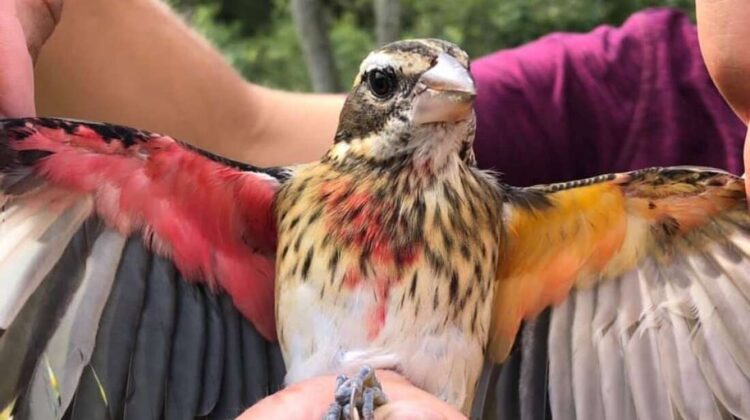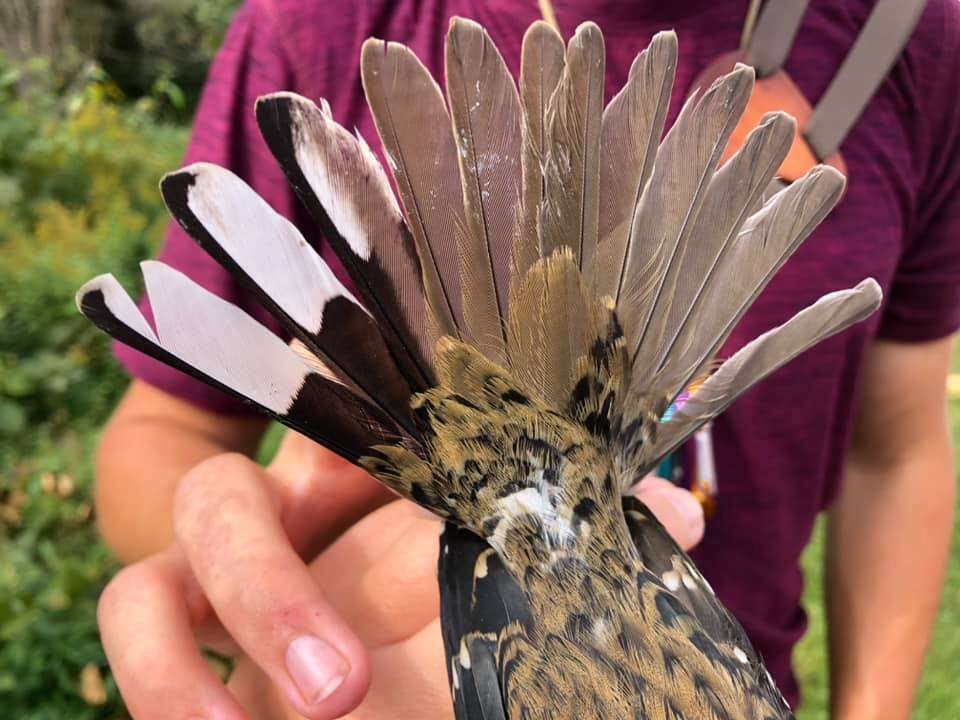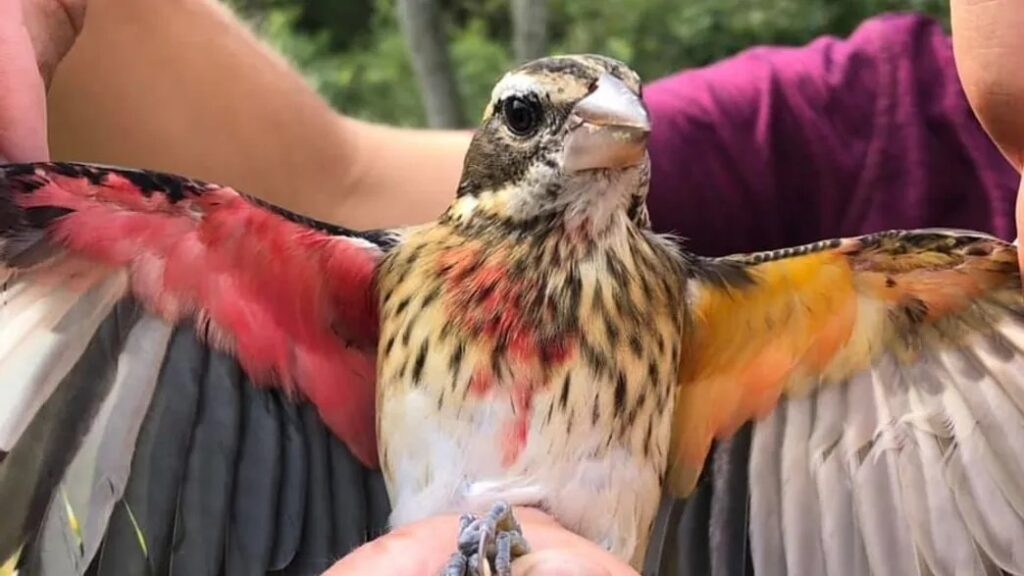
In a remarkable discovery, biologists in Pennsylvania have captured an exceedingly rare bird that defies conventional gender norms – a genetic marvel that is literally half-male and half-female, adorned with the vibrant hues characteristic of both sexes. This unique bird, belonging to the rose-breasted grosbeak species, was apprehended and banded by researchers from the Carnegie Museum of Natural History on September 24 at the Powdermill Nature Reserve in Rector, Pennsylvania.
The rose-breasted grosbeak, known for its richly colored plumage, typically exhibits distinct sexual dimorphism, with males displaying rosy red feathers. However, this particular avian anomaly showcases an astonishing phenomenon called bilateral gynandromorphism. The right side of its body boasts the crimson hue typical of males, while the left side is adorned in brown-orange, akin to the plumage of a female.

Annie Lindsay, the bird banding program manager at Powdermill, expressed the team’s excitement at encountering this rarity, likening the experience to “seeing a unicorn.” Bilateral gynandromorphism, though uncommon, is deemed a normal occurrence in the intricate world of genetics and provides a captivating glimpse into a rare phenomenon.
To comprehend the origin of this peculiar occurrence, it’s essential to delve into avian sex determination. Unlike humans, where females possess two identical sex chromosomes (XX) and males have one of each (XY), birds follow a different pattern. Males carry a double sex chromosome (ZZ), while females possess one of each (ZW).

Gynandromorphy, occurring due to various reasons across different species, is thought to manifest in birds when an egg develops with two nuclei—one carrying a Z and the other a W. Upon fertilization by sperm carrying two male Z chromosomes, the resulting egg develops with both ZZ (male) and ZW (female) chromosomes.
Now, the team is intrigued to observe whether this rare avian specimen can successfully breed. Given that only the left ovary is typically functional in birds, and the left side of this bird is the female aspect, there is a theoretical possibility for successful mating with a male. However, the distinct feathers may provoke territorial responses from other males, potentially hindering its chances of successful courtship.

While the odds of gynandromorphy are exceptionally slim, instances of bilateral gynandromorphism have been documented in various animals. This discovery adds to the growing catalogue of unique occurrences in the natural world, showcasing the intricacies of genetic processes that continue to captivate and baffle scientists and enthusiasts alike.
